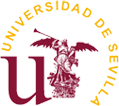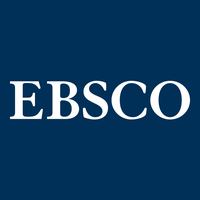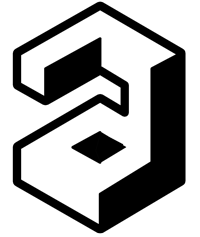Cognitive, morbid and premorbid factors in the development and maintenance of paranormal beliefs.
DOI:
https://doi.org/10.55414/1jvmcc11Keywords:
Paranormal beliefs, Cognitive morbid and premorbid factors, Theory of Compensation of Basic Needs (Russell & Jones, 1980) , Empirical studyAbstract
The literature shows a large number of theories and contributing factors in the development and maintenance of paranormal beliefs. This study explores a series of variables related to the main perspectives in a sample of 184 subjects:
Schizotypy (rxy=0.23, p<0.001), unusual experiences (rxy=0.37, p<0.001), introvertive anhedonia (rxy=0.28, p<0.001), conditional reasoning in tasks with paranormal content (rxy=0.23, p=0.001), need for affiliation (rxy=0.21, p<0.002), and report of subjective extraordinary experiences (rxy=0.35, p<0.001) correlated significantly with belief in the paranormal. These results are consistent with Russell and Jones’ (1980) Theory of Compensation of Basic Needs and suggest that paranormal belief may rise in combination with premorbid signs of psychopathology. However, they suggest that belief in the paranormal may not be a consequence of a cognitive deficit in this type of reasoning. An integrative model based on a belief-experience feedback mechanism is suggested.
Downloads
References
Andrés Pueyo, A., Teixeira do Carmo, J. y Álvarez López, E. (2001). Creencias y experiencias paranormales en esquizotipia. Revista de Psicología Universitas Tarraconensis, 23(1-2), 132-148.
Avci, A., Bozgeyikli, H. y Kesici, S. (2017). Psychological Needs as the Predictor of Teachers’ Perceived Stress Levels. Journal of Education and Training Studies, 5(4), 154-164 [DOI:10.11114/jets.v5i4.2274].
Bader, C., Day, E. y Gordon, A. (2017). Paranormal America 2017 Chapman University Survey of American Fears 2017.
Berkowski, M. y MacDonald, D.A. (2014). Childhood Trauma and the Development of Paranormal Beliefs. The Journal of Nervous and Mental Disease. 202(4), 305-312 [DOI: 10.1097/NMD.0000000000000123].
Blackmore, S. (1997). Probability misjudgment and belief in the paranormal: A newspaper survey. British Journal of Psychology, 88(4), 683-689 [DOI: 10.1111/j.2044-8295.1997.tb02665.x].
Blackmore, S. y Troscianko, T. (1985). Belief in the paranormal: Probability judgments, illusory control, and the “chance baseline shift”. British Journal of Psychology, 76(4), 459-468 [DOI: 10.1111/j.2044-8295.1985.tb01969.x].
Britton, W.B. y Bootzin, R.R. (2004). Near-Death Experiences and the Temporal Lobe. Psychological Science 15(4), 254-258 [DOI: 10.1111/j.0956-7976.2004.00661.x].
Brugger, P., Gamma, A, Muri, R., Schäfer, M. y Taylor, K.I. (1993). Functional Hemispheric Asymmetry and Belief in ESP: Towards a “Neuropsychology of Belief”. Perceptual and Motor Skills, 77(3), 1299-1308 [DOI: 10.2466/pms.1993.77.3f.1299].
Buchy, L., Woodward, T.S. y Liotti, M. (2007). A cognitive bias against disconfirmatory evidence (BADE) is associated with schizotypy. Schizophrenia Research, 90(1-3), 334-337 [DOI: 10.1016/.schres.2006.11.012].
Castro, M., Burrows, R. y Wooffitt, R. (2014). The Paranormal is (Still) Normal: The Sociological Implications of a Survey of Paranormal Eexperiences in Great Britain. Sociological Research Online, 19(3), 16 [DOI: 10.5153/sro.3355].
Dagnall, N., Denovan, A., Drinkwater, K. Parker, A. y Clough, P.J. (2016). Toward a Better Understanding of the Relationship between Belief in the Paranormal and Statistical Bias: The Potential Role of Schizotypy. Frontiers in Psychology, 7, 1045 [DOI: 10.3389/fpsyg.2016.01045].
Dagnall, N., Denovan, A., Drinkwater, K., Parker, A. y Clough, P.J. (2017). Urban Legends and Paranormal Beliefs: The Role of Reality Testing and Schizotypy. Frontiers in Psychology, 8, 942 [DOI: 10.3389/fpsyg.2017.00942].
Dagnall, N., Drinkwater, K., Parker, A. y Munley, G. (2010). Reality Testing, Belief in the Paranormal, and Urban Legends. European Journal of Parapsychology 25, 25-55.
Dagnall, N., Drinkwater, K., Parker, A., & Rowley, K. (2014). Misperception of Chance, Conjunction, Belief in the Paranormal and Reality Testing: A Reappraisal. Applied Cognitive Psychology, 28(5), 711-719 [DOI: 10.1002/acp.3057].
Dagnall, N., Parker, A. y Munley, G. (2007).Paranormal belief and reasoning. Personality and Individual Differences, 43(6), 1406-1415 [DOI: 10.1016/j.paid.2007.04.017].
Denovan, A., Dagnall, N., Drinkwater, K. y Parker, A. (2018). Latent Profile Analysis of Schizotypy and Paranormal Belief: Associations with Probabilistic Reasoning Performance. Frontiers in Psychology, 9, 35 [DOI: 10.3389/fpsyg.2018.00035].
Drinkwater, K., Dagnall, N., Grogan, S. y Riley, V. (2017). Understanding the Unknown: A Thematic Analysis of Subjective Paranormal Experiences. Australian Journal of Parapsychology, 17(1), 23-46.
Fitzpatrick, O.D. y Shook, S L. (1994). Belief in the paranormal: Does identity development during the college years make a difference? An initial investigation. Journal of Parapsychology, 58(3), 315-329.
French, C.C. (1992). Factors underlying belief in the paranormal: Do sheep and goats think differently? The Psychologist, 5, 295-299.
Friedman, B.A. y Mandel, R.G. (2011).Motivation predictors of college student academic performance and retention. Journal of College Student Retention: Research, Theory and Practice, 13(1), 1-15 [DOI: 10.2190/CS.13.1.a].
Garrett, B.M. y Cutting, R.L. (2017). Magical beliefs and discriminating science from pseudoscience in undergraduate professional students. Heliyon, 3(11), e00433 [DOI: 10.1016/j.heliyon.2017.e00433].
Goulding, A. (2004). Schizotypy models in relation to subjective health and paranormal beliefs and experiences. Personality and Individual Differences, 37(1), 157-167 [DOI: 10.1016/j.paid.2003.08.008].
Goulding, A. (2005). Healthy schizotypy in a population of paranormal believers and experients. Personality and Individual Differences, 38(5), 1069-1083 [DOI: 10.1016/j.paid.2004.07.006]
Glicksohn, J. (1990). Belief in the paranormal and subjective paranormal experience. Personality and Individual Differences, 11(7), 675-683 [DOI: 10.1016/0191-8869(90)90252-M].
Heckert, T.M., Cuneio, G., Hannah, A.P., Adams, P.J., Droste, H.E., Mueller, M.A., Wallis, H.A., Griffin, C.M. y Roberts, L.L. (2000) Creation of a new Needs Assessment Questionnaire. Journal of Social Behaviour & Personality, 15(1), 121-136.
Hergovich, A., Schott, R. y Arendasy, M. (2008). On the relationship between paranormal belief and schizotypy among adolescents. Personality and Individual Differences, 45(2), 119-125 [DOI: 10.1016/j.paid.2008.03.005].
Hergovich, A., Willinger, U. y Arendasy, M. (2005). Paranormal Belief, Schizotypy, and Body Mass Index. Perceptual and Motor Skills, 100(3), 883-891 [DOI: 10.2466/pms.100.3.883-891].
Irwin, H. J. (1993). Belief in the paranormal: A review of the empirical literature. Journal of the American Society for Psychical Research, 87(1), 1-39.
Irwin, H.J. (2003). Reality testing and the formation of paranormal beliefs. European Journal of Parapsychology, 18, 15-27.
Irwin, H.J. (2009). The Psychology of Paranormal Belief. A Researcher’s Handbook. Hertfordshire: University of Hertfordshire Press.
Irwin, H.J., Dagnall, N. y Drinkwater, K. (2013). Parapsychological experience as anomalous experience plus paranormal attribution: A questionnaire based on a new approach to measurement. Journal of Parapsychology, 77(1), 39-53.
Lange, R. y Thalbourne, M.A. (2002). Rasch Scaling Paranormal Belief and Experience: Structure and Semantics of Thalbourne’s Australian Sheep-Goat Scale. Psychological Reports, 91(3), 1065-1073 [DOI: 10.2466/pr0.2002.91.3f.1065].
Lawrence, T.R. (1995a). How many factors of paranormal belief are there? A critique of the Paranormal Belief Scale. The Journal of Parapsychology, 59(1), 3-25.
Lawrence, T.R. (1995b). Moving on from the Paranormal Belief Scale: A Final Reply to Tobacyk. The Journal of Parapsychology, 59(2), 131-140.
Lawrence, T.R., Roe, C. y Kani, K. (1997). Confirming the factor structure of the Paranormal Beliefs Scale: Big orthogonal seven or oblique five? The Journal of Parapsychology, 61(1), 13-31.
Markovsky, B. (2008). “The Paranormal and the Politics of Truth: A Sociological Account”, by Jeremy Northcote. Contemporary Sociology: A Journal of Reviews, 37(5), 451-452 [DOI: 10.1177/009430610803700529].
Mason, O., Linney, Y. y Claridge, G. (2005). Short scales for measuring schizotypy. Schizophrenia Research, 78(2-3), 293-296 [DOI: 10.1016/j.schres.2005.06.020].
Mason, O., Claridge, G. y Jackson, M. (1995). New Scales for the assessment of Schizotypy. Personality and Individual Differences, 18(1), 7-13 [DOI: 10.1016/0191-8869(94)00132-C].
Moritz, S. y Woodward, T.S. (2005). Jumping to conclusions in delusional and non-delusional schizophrenic patients. British Journal of Clinical Psychology, 44(2), 193-207 [DOI: 10.1348/014466505X35678].
O’Keefe, D.J. (2003).Against Familywise Alpha Adjustment. Human Communication Research, 29(3), 431-447 [DOI: 10.1111/j.1468-2958.2003.tb00846.x].
Parra, A. (2010). Indicadores de propensión a la esquizotipia entre individuos creyentes en lo paranormal: examinando la intensidad de la imaginería, esquizotipia y experiencias alucinatorias. Psicologia: Teoria E Prática, 12(3), 78-94.
Pekala, R.J. (1991). The Phenomenology of Consciousness Inventory. En R.J. Pekala, Quantifying Consciousness (pp. 127-143). Nueva York: Plenum Press [DOI: 10.1007/978-1-4899-0629-8_8].
Perkins, S.L. y R. Allen. (2006). Childhood Physical Abuse and Differential Development of Paranormal Belief Systems. The Journal of Nervous and Mental Disease. 194(5), 349-355 [DOI: 10.1097/01.nmd.0000217832.85665.c5].
Persinger M.A. (1984). People who report religious experiences may also display enhanced temporal-lobe signs. Perceptual and Motor Skills, 58(3), 963-975 [DOI: 10.2466/pms.1984.58.3.963].
Pizzagalli, D., Lehmann, D. y Brugger, P. (2001). Lateralized Direct and Indirect Semantic Priming Effects in Subjects with Paranormal Experiences and Beliefs. Psychopathology, 34(2), 75-80 [DOI: 10.1159/000049284].
Rabeyron, T. y Watt, C. (2010). Paranormal experiences, mental health and mental boundaries, and psi. Personality and Individual Differences, 48(4), 487-492 [DOI: 10.1016/j.paid.2009.11.029].
Rattet, S.L. y Bursik, K. (2001). Investigating the personality correlates of paranormal belief and precognitive experience. Personality and Individual Differences, 31(3), 433-444 [DOI: 10.1016/S0191-8869(00)00148-3].
Roe, C.A. y Morgan, C.L. (2002). Narcissism and Belief in the Paranormal. Psychological Reports, 90(2), 405-411 [DOI: 10.2466/pr0.2002.90.2.405].
Rogers, P., Davis, T. y Fisk, J. (2009). Paranormal Belief and Susceptibility to the Conjunction Fallacy. Applied Cognitive Psychology, 23(4), 524-542 [DOI: 10.1002/acp.1472].
Rogers, P., Fisk, J.E. y Lowrie, E. (2016). Paranormal Believers’ Susceptibility to Confirmatory Versus Disconfirmatory Conjunctions. Applied Cognitive Psychology, 30(4), 628-634 [DOI: 10.1002/acp.3222].
Rogers, P., Fisk, J.E. y Wiltshire, D. (2011). Paranormal Belief and the Conjunction Fallacy: Controlling for Temporal Relatedness and Potential Surprise Differentials in Component Events. Applied Cognitive Psychology, 25(5), 692-702 [DOI: 10.1002/acp.1732].
Rogers, P., Qualter, P. y Wood, D. (2016). The impact of event vividness, event severity, and prior paranormal belief on attributions towards a depicted remarkable coincidence experience: Two studies examining the misattribution hypothesis. British Journal of Psychology 107(4), 710-751 [DOI: 10.1111/bjop.12173].
Rose, G. y Barker, D.J.P. (1978). Epidemiology for the uninitiated. What is a case? Dichotomy or continuum. British Medical Journal, 6141, 873-874 [DOI: 10.1136/bmj.2.6141.873].
Rosenberg, M. (1965). Society and the adolescent self-image. Princeton, NJ: Princeton University Press.
Rubio Larrosa, V. y Pérez Urdaniz, A. (2004). Trastornos de la personalidad. Madrid: Elsevier.
Russell, D. y Jones, W.H. (1980). When Superstition Fails: Reactions to Disconfirmation of Paranormal Beliefs. Personality and Social Psychology Bulletin, 6(1), 83-88 [DOI: 10.1177/014616728061012].
Sellen, J.L., Oaksford, M. y Gray, N.S. (2005). Schizotypy and Conditional Reasoning. Schizophrenia Bulletin, 31(1), 105-116 [DOI: 10.1093/schbul/sbi012].
Schmied-Knittel, I. y Schetsche, M.T. (2005). Everyday Miracles. Results of a Representative Survey in Germany. European Journal of Parapsychology 20(1), 3-21.
Schulter, G. y Papousek, I. (2008). Believing in paranormal phenomena: Relations to asymmetry of body and brain. Cortex, 44(10), 1326-1335 [DOI: 10.1016/j.cortex.2007.08.022].
Shiah, Y.J., Wu, Y.Z., Chen, Y.H. y Chiang, S.K. (2014). Schizophrenia and the paranormal: More psi belief and superstition, and less déjà vu in medicated schizophrenic patients. Comprehensive Psychiatry 55(3), 688-992 [DOI: 10.1016/j.comppsych.2013.11.003].
Shorkey, C.T. y Whiteman, V. (1978). The Rational Behavior Inventory. Princeton, NJ: Educational Testing Service.
Silber, E. y Tippett, J. (1965). Self-esteem: Clinical assessment and measurement validation. Psychological Reports, 16 (suplemento monográfico 4), 1017-1071 [DOI: 10.2466/pr0.1965.16.3c.1017].
Simmonds-Moore, C., Rice, D.L., O’Gwin, C. y Hopkins, R. (2019). Exceptional Experiences Following Exposure to a Sham “God Helmet”: Evidence for Placebo, Individual Difference, and Time of Day Influences. Imagination, Cognition and Personality, 39(1), 44-87 [DOI: 10.1177/0276236617749185].
Smith, D. (2009). Pseudoscience and Extraordinary Claims of the Paranormal: A Critical Thinker’s Toolkit. Londres: Wiley-Blackwell.
Tabachnick, B.G. y Fidell, L.S. (2013). Using Multivariate Statistics. Pearson, Boston.
Tobacyk, J.J. (1995a). What is the Correct Dimensionality of Paranormal Beliefs? A reply to Lawrence’s Critique of the Paranormal Belief Scale. The Journal of Parapsychology, 59(1), 27-46.
Tobacyk, J.J. (1995b). Final Thoughts on Issues in the Measurement of Paranormal Beliefs. The Journal of Parapsychology, 59(2), 141-145.
Tobacyk, J.J. (2004). A Revised Paranormal Belief Scale. The International Journal of Transpersonal Studies, 23(1), 94-98 [DOI: 10.24972/ijts.2004.23.1.94].
Tobacyk, J.J. y Milford, G. (1983). Belief in Paranormal Phenomena: Assessment Instrument Development and Implications for Personality Functioning. Journal of Personality and Social Psychology, 44(5), 1029-1037 [DOI: 10.1037/0022-3514.44.5.1029].
Tobacyk, J.J. y Mitchell, T. E. (1987). Out-of-Body Experience Status as a Moderator of Effects of Narcissism on Paranormal Beliefs. Psychological Reports, 60(2), 440-442 [DOI: 10.2466/pr0.1987.60.2.440].
Tobacyk, J.J. y Thomas, A. (1997). How the big orthogonal seven is really the oblique seven. The Journal of Parapsychology, 61(4), 337-342.
Truzzi, M. (1971). Definition and dimensions of the occult: Towards a sociological perspective. The Journal of Popular Culture, 5(3), 635-646 [DOI: 10.1111/j.0022-3840.1971.0503_635.x].
Wackermann, J. y Allefeld, C. (2007). On the meaning and interpretation of global descriptors of brain electrical activity. Including a reply to X. Pei et al. International Journal of Psychophysiology, 64(2), 199-210 [DOI: 10.1016/j.ijpsycho.2007.02.003].
Wierzbicki, M. (1985). Reasoning errors and belief in the paranormal. The Journal of Social Psychology, 125(4), 489-494 [DOI: 10.1080/00224545.1985.9713529].
Woods, C. y Wooffitt, R. (2014). Telling the moment: Seeing a UFO. Narrative Inquiry, 24(2), 239-258 [doi:10.1075/ni.24.2.04woo]
Downloads
Published
Issue
Section
License
Copyright (c) 2020 APUNTES DE PSICOLOGÍA

This work is licensed under a Creative Commons Attribution-NonCommercial-NoDerivatives 4.0 International License.

























